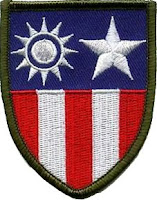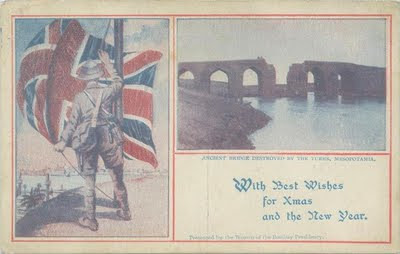Today's item is an interesting piece of pamphlet dropped over Karachi in end of 1944 to encourage people to contribute whole heartily to war funds. During world war II, British government came up with National Saving Certificates or Saving Bonds to encourage general public to buy it. This was a great idea to offer public to put their savings in bonds. This allowed general public to get money back after 5/10 years of span with some interest and for government to fund any spending as needed.
British government in India used to come up with such schemes time to time during war days and set target for each province/presidency for collection. This pamphlet shows the need for people of Sind or Sindh to do their part to fulfill the obligation.
 The pamphlet is dated 29th December, 1944 and carries a message from then Governor of Sind "Sir Hugh Dow" with his printed signature at last page. The pamphlet is of 4 page, printed in both English and Urdu.
The pamphlet is dated 29th December, 1944 and carries a message from then Governor of Sind "Sir Hugh Dow" with his printed signature at last page. The pamphlet is of 4 page, printed in both English and Urdu.
Here is text from Page 1:
"ALREADY one week of the National Savings Fortnight has passed to hit our target in this province we shall have to subscribe still three crores of rupees within the next seven days. This gigantic task cannot be completed without YOUR cooperation and YOUR good sense. Read the messages from His Excellency the Governor and the Honourable Premier which are printed in this pamphlet and realize why it is necessary for you to help yourself and your countrymen in this way."
 Here is the message on page 4:
Here is the message on page 4:
British government in India used to come up with such schemes time to time during war days and set target for each province/presidency for collection. This pamphlet shows the need for people of Sind or Sindh to do their part to fulfill the obligation.
 The pamphlet is dated 29th December, 1944 and carries a message from then Governor of Sind "Sir Hugh Dow" with his printed signature at last page. The pamphlet is of 4 page, printed in both English and Urdu.
The pamphlet is dated 29th December, 1944 and carries a message from then Governor of Sind "Sir Hugh Dow" with his printed signature at last page. The pamphlet is of 4 page, printed in both English and Urdu.Here is text from Page 1:
"ALREADY one week of the National Savings Fortnight has passed to hit our target in this province we shall have to subscribe still three crores of rupees within the next seven days. This gigantic task cannot be completed without YOUR cooperation and YOUR good sense. Read the messages from His Excellency the Governor and the Honourable Premier which are printed in this pamphlet and realize why it is necessary for you to help yourself and your countrymen in this way."
NOW is the time to Save ...
Save all you can ...
Invest all you Save.
Save all you can ...
Invest all you Save.
 Here is the message on page 4:
Here is the message on page 4: Governor's CAMP,
SIND.
29th December, 1944.
SIND.
29th December, 1944.
MESSAGE
"This is the first day of a Savings Fortnight which is being held all over India and I welcome this opportunity to appeal to the people of Sind to surpass the target of five crores which has been set for this Province. After a somewhat slow start, Sind has taken a high places among the Provinces, and I hope that everyone will take a pride in this and in improving on it. Victory is now insight and cannot be long delayed. We can do much to speed its coming by helping in the battle against inflation and investing in Victory Bonds and National Saving Certificates. I appeal today particularly to those who can only afford to put aside a small amount each month. National Saving Certificates are designed especially for them, so that they may share in the pride of victory and in its necessary sacrifices, and that they may have some reserves with which to face the vicissitudes of the future. Britain and the United States have met much of the vast cost of this war by means of the savings of quite poor people. There are few people in Sind so poor that they could not afford to save even four annas a month. Yet that is all that is required as an average for the whole Province. Remember that every anna will help your own countrymen and your allies in the fighting line, and that with your help they will be enabled more speedily to restore peace to this tortured world."
 Finally shown above is same text written in Urdu in page 2 and 3. I have to admit that the message was quite touching :D We can argue both sides of it for hours. But at first instance it is a propaganda for sure.
Finally shown above is same text written in Urdu in page 2 and 3. I have to admit that the message was quite touching :D We can argue both sides of it for hours. But at first instance it is a propaganda for sure."Britain and the United States have met much of the vast cost of this war by means of the savings of quite poor people. There are few people in Sind so poor that they could not afford to save even four annas a month. Yet that is all that is required as an average for the whole Province."
Statements like above seems outrageous to me. While I don't deny the contribution of any country but imagine asking four annas from poor fellow who can't even save that in whole of a month (which was known fact to British Empire).
Anyway, it is a great piece of history and I hope you will enjoy reading it without getting into merit/demerits of it. Even I understand importance of this message and such contribution only helps a cause but I got carried away by that statement, you know ;-) after all I am also human.


























